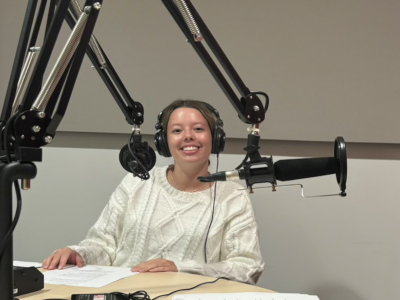Carleton’s Journalism program is taking significant new steps to foster more diversity and inclusion in the school’s curriculum and teaching practices and among the ranks of its faculty and instructors.
“Sometimes there is a confluence of events that serves as a very powerful force for change. Now is one of those times,” Susan Harada, the Journalism program head, said at a meeting where faculty members voted overwhelmingly in support of the package of changes.
Harada and the incoming head of the journalism program, Allan Thompson, outlined the changes in an open letter to students.
“Carleton University’s journalism program is the oldest in the country. As such we have a responsibility to acknowledge the role we have played in the perpetuation of systemic racism in the education of young journalists,” the letter begins. “Equally important, we have a responsibility to be clear about the actions we are undertaking as we try to address the very real concerns about the lack of diversity and inclusion in our program.”
The letter goes on: “We have not done enough to ensure that those of you with diverse backgrounds feel welcome and heard in our classrooms. Nor have we done enough to ensure that all of you acquire the capabilities you need to report on the full diversity of communities and individuals who make up Canadian society and the world.”
The action plan includes the following measures:
- The Journalism program will establish a new academic post – the Carty Chair in Journalism, Diversity and Inclusion Studies. The goal is to hire a new faculty member for this endowed chair by July 2021. The successful applicant will create new course offerings, establish a program of research and bring a focus to the Journalism program’s efforts to foster an environment that cultivates diverse journalists and fully recognizes and engages with all members of Canadian society. The journalism program also committed to more diversity in the future hiring of faculty members, contract instructors and staff;
- As part of a review of curriculum, first-year introductory undergraduate courses will now have a strong central focus on diversity and inclusion. For example, the winter term course will be renamed “Foundations: Practising Journalism in a Diverse Society” and will be anchored firmly in the belief that real change starts with a clear understanding of how to cover communities that have long been marginalized. And at the graduate level, foundational courses will reflect the same focus. And a new Master’s course on journalism, race and diversity will be launched in September.
- Journalism faculty members and contract instructors will be given clear guidance to be mindful of diversity and inclusion issues in course design and delivery and in interactions with students. To ensure real change in course content throughout – including the selection of topics, readings, assignments, examples and guest speakers – the program will continually assess curriculum and provide a Diversity and Inclusion checklist to assist instructors as they build their courses. And to support the use of that checklist the program will ask everyone who teaches to participate in unconscious bias training in preparation for this coming fall and beyond;
- The journalism program will make it mandatory for all students to complete a course in Indigenous history in order to meet responsibilities more fully as a journalism program under the Truth and Reconciliation’s Call to Action 86.
- The journalism program will continue to support the work of its student-led Equity and Inclusion Committee.
- An annual report will be produced to chart progress.
Last year, after discussions with current and former students, the journalism program hired an expert journalist with lived experience to conduct a consultation with faculty and staff on issues of diversity. This expert then organized a “story circle” for students to share their experiences in our program and suggest changes. Out of that process emerged the committee, which includes faculty members as liaisons. The committee gathered and presented student concerns, along with specific recommendations for how to make progress. It began examining how students could comfortably raise their complaints and have them addressed. It offered to provide feedback to as program worked to improve the scope of its teaching practices and materials.
“It does not end with this,” Harada and Thompson said in their open letter. “The faculty and leadership of the Journalism program recognize that addressing diversity and inclusion is a central challenge to our credibility as an institution serving the full diversity of Canadian society – not only with regard to race, but also ethnicity, religion, gender, sexual orientation and ability.
“We do not underestimate the scale of this ongoing challenge. Each year we will release a report to chart our progress – where we achieved positive change, what we still need to do.
As we work to build a diverse and inclusive Journalism program for all of you, we will keep this conversation going. We invite you – as well as our former students and working journalists – to join in.”
Friday, June 12, 2020 in Journalism News, News
Share: Twitter, Facebook



